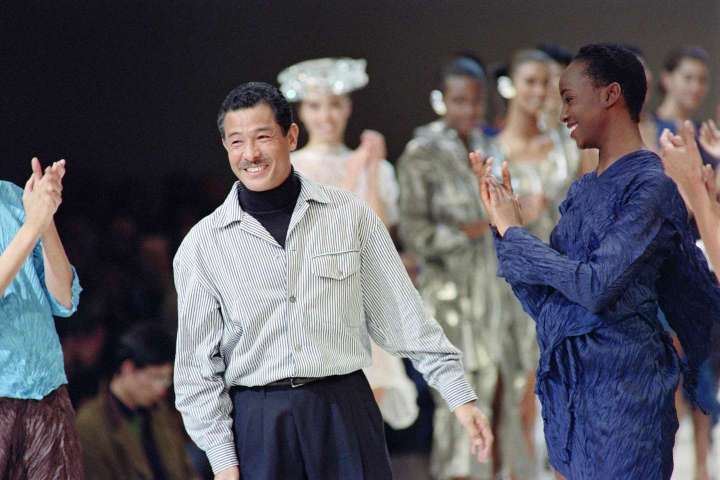Designer Issey Miyake, known in the fashion world as the prince of pleats and for his innovative cuts and bold style, has died of cancer. He was 84.
Issey Miyake, Japanese fashion designer known as the prince of pleats, dies

The pioneering designer, who became a star in the 1970s shortly after he formed his studio, was best known for his origami-style pleated clothing that never wrinkles and for making Apple founder Steve Jobs’s signature black turtlenecks.
Japan’s public media organization NHK reported that a family funeral has taken place and that there will be no further public events, in keeping with Miyake’s wishes.
His clothes weren’t form-fitting like those of his Western counterparts, as he championed freedom of movement and put special emphasis on each piece of cloth to begin his sleek designs. They were often made with minimal decoration and detail, in sweeping shapes and block colors.
Miyake always stayed true to his “core design style — creating clothes from original materials starting with the research of a single thread,” a technique that “transcended generations” and “broke the boundaries between East and West,” his studio’s website says.
“To me, clothes should not be things which confine or enclose the body … clothes should make one free,” Miyake said in a lecture in Washington in 1998. “Maybe I make tools. People buy the clothes and the clothes become tools for the wearer’s creativity,” he added.
His designs have been worn by a trove of celebrities and put on display in museums around the world. There are 136 Miyake stores in Japan and 134 others worldwide. He went on to design handbags, watches and fragments before stepping back in 1997.
Miyake, who was born in Hiroshima in southern Japan in 1938, was 7 when the United States dropped an atomic bomb on the city in 1945, killing tens of thousands, including his mother, who died of radiation exposure three years later, he wrote in an opinion piece for the New York Times in 2009. He said he had never wanted “to be defined by my past.”
“I did not want to be labeled ‘the designer who survived the atomic bomb,’ and therefore I have always avoided questions about Hiroshima. They made me uncomfortable,” he wrote as he urged President Barack Obama to visit the city during an Asian tour. “But now I realize it is a subject that must be discussed if we are ever to rid the world of nuclear weapons.”
“I close my eyes, I still see things no one should ever experience,” he wrote. “A bright red light, the black cloud soon after, people running in every direction trying desperately to escape — I remember it all.”
Miyake went on to study graphic design at a Tokyo art university, according to Reuters, and then clothing design in Paris, where he worked as an apprentice for fashion designers Guy Laroche and Hubert de Givenchy. He later moved to New York and then back to Tokyo.
Apple co-founder Jobs told his biographer that he had asked the Japanese designer to make him a uniform for his company’s staff, but that idea was quickly dismissed by employees. Jobs, who died at 56 in 2011, took to wearing the black shirts, often paired with stiff blue jeans and white sneakers.
“So I asked Issey to make me some of his black turtlenecks that I liked, and he made me like a hundred of them,” Jobs said, showing off a stack in his wardrobe. “I have enough to last for the rest of my life.”
Suliman reported from London, Inuma from Tokyo.






